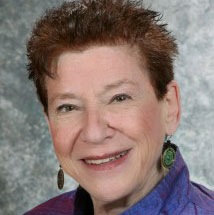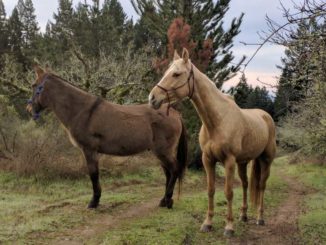Podcast: Play in new window | Download
Subscribe: RSS
Welcome to Trauma Tuesday. Did you know that over 30 million adults in the United States have tried yoga. Many people are turning to the ancient practice as a way to relax, thinking it will help them manage stress. Yet the public and many medical doctors are unaware that yoga and meditation can actually increase stress. Surprising, no? I found this out the hard way.
Over 20 years ago, I began meditative and yogic practices thinking it would help me relax. Although I had chronic depression and anxiety, I wasn’t being medically treated and like many depressed people I thought this was just the way I was and I had to just learn to cope with it. I was unaware that locked in my mind and body were repressed memories of severe childhood ritual abuse.
When I practiced yoga or chi gung, I would find myself getting more and more agitated for apparently no reason. Sometimes the practice would make me feel kind of queasy or just plain uncomfortable, like I was going to jump out of my skin. Often, I was relieved when I finished. I usually felt much better at the end. I wasn’t sure if the practice made me feel better or it I was just relieved that I could stop. If I was in an hour class, I would watch the clock, anticipating the relief when it was over.
When I first started studying chi gung, my teacher told me that these types of practices (yoga, chi gung, and other somatic practices) can bring up stuff. I got what he was saying, but feeling internal pressure during practice didn’t feel like “my stuff” was coming up. I thought my stuff would have a label or a story when it came up. I didn’t sense the connection. I didn’t know why practice made me so uncomfortable, but I did know that I sensed it was important to continue despite my discomfort. It was hard to do my practice, but I was dedicated. One of the tricks I used to help me practice every day was to practice outside. It was easy to walk out the door in the morning. It was harder to start to practice. My trick was to just not let my let myself go back in until I had completed my practice.
Experienced yoga instructors and psychologists know that these practices can trigger repressed trauma, but the general public remains uninformed. I had all the signs of unresolved trauma in my daily life. But since these were my “normal” I didn’t realize they represented a condition I could recover from.
What are the signs of unresolved trauma?
- Dissatisfaction with work and life – nothing ever feels good enough
- Dissociation or spacing out – Day dreaming, distraction, disconnect from emotions or reactions
- Hypervigilance – Hyper aware of one’s surroundings. I am always aware of where I might be vulnerable to attack. This could border on slight paranoia. In all situations I am always alert to the potential of being robbed and position my belongings in such a manner as to protect them.
- Compulsive behaviors – This could include a lot of different things. In particular, the need to have things in a specific order in order to feel safe or calm. Some normal behaviors could actually be compulsive. It is more about the emotion behind them. For instance, locking the door to our home seems normal enough, but if our sense of safety depends on it or we are driven to check or recheck that it is locked could be considered compulsive.
- Cravings and addictions – This includes addictions to drugs, foods, shopping, video games. It could also be seen as a need to distract to avoid the trauma that would arise if we are not preoccupied with something else.
- Depression
- Unexplained anxiety or fears
How does meditation and yoga increase stress?
Yoga literally means union. Yoga is a practice that is aimed at creating a unified state where one can abide in peace. Technically both Chi Gung and meditation can be forms of yoga. In contrast, some of new classes called yoga are more just forms of exercise, having lost touch with some of the fundamental principles of awareness of channels and wind. Yoga can be a purely mental activity, with no physical movement at all.
Yoga and meditation are practices that are aimed at peace. This isn’t the peace that is about feeling relaxed and serene. This is about what I have started calling Extreme Peace. It is about never having an uncomfortable feeling again. In order to have Extreme Peace you have to get rid of anything that is in the body and mind that stands in the way of that. That is what yoga is aimed at. Hence, if you have any unresolved anger, sadness, or fears they may come up during a session. This emotional release increases stress short term, and may make you quit practicing, but long term if you can last it out, you will reach a more stable place of peace and ultimately have Extreme Peace and Extreme Joy.
How many people have unresolved issues that yoga might trigger?
In episode 3 of Positive Change with Dorena I go into the prevalence and consequences of unresolved childhood trauma. Let me summarize it briefly here:
In the late 1990’s in a joint study between the CDC and Kaiser Permanente over 17,000 adults were surveyed to find out about adverse childhood experiences. They found that over half the population reported at least one adverse childhood experience. They also found that the risk for health issues such a cancer and heart disease went up in a dose dependent manner dependent on the number of adverse experiences. But childhood experiences are not the only types of trauma that people experience. Difficult relationships, a bad work environment can all become unresolved issues that may arise during a yoga session. Everyone has unresolved issues that can arise. I have found that all people with daily and sustained practice will encounter uncomfortable emotions and memories arising during their practice.
What can happen during a yoga or meditation session?
- Feeling uncomfortable “I would feel like I was going to explode”
- Distraction or dissociation
- Feelings coming up that don’t match the circumstances
One of my first realizations that I had from meditating was that feelings arose first and then my mind would find circumstances to match the. For instance, I would be sitting and become aware of anger arising. It would seem to come out of the blue. And then I would notice my mind would start thinking about things to be angry about – usually something my roommates did or didn’t do.
People talk about things triggering their anger or sadness and I realized that the emotion arose first and then we picked things that matched the emotion. It wasn’t until decades later that I realized that the emotions that were arising were probably from unresolved childhood trauma. My assumption that the emotions where just popping up out of thin air was probably wrong.
- Dramatic or rapid shifting of emotions – suddenly angry or sad
- Flashbacks
This was very rare for me. I had to consciously dig into my subconscious to retrieve memories. However, once when I was doing Tai Chi, across my mind’s eye flashed a picture of a leg. A skinny little leg like when I was seven or eight. I recognized it as a memory and after I completed my practice I did some work including the Change Anything Now Process to resolve the trauma.
Should people with trauma avoid all yoga and meditation?
No, like I said before yoga and meditation will bring up your stuff and if you really want to get clear of that garbage then continue to do the yoga and meditation. If meditation is too hard, definitely explore practices that combine movement with meditation like vajra dance, yoga, chi gung, tai chi, etc. Because of the ability of yoga to access trauma, some therapist are even using yoga in the treatment of people with depression and PTSD.
Many people with a trauma history have a hard time with sitting meditation. For us, yoga and movement practices are invaluable. However, I am convinced that sitting meditation can be a powerful practice for gaining insight. So, what do you do when sitting triggers cravings, memories, and/or pain that is unbearable during a sit?
At the peak of my trauma releasing, before I really knew that I was clearing trauma, I would alternate short 15 to 20 minute sits with yoga, chi gung, and tai chi. I didn’t know what was going on, but I did know that I couldn’t sit longer than 20 minutes without incredible pressure building up inside. It felt like my body would explode. A short session of meditative movement would help relieve the pressure and I could focus again.
I want to talk about one time where I actually had a very successful realization of the trauma clearing process. I was on a 40-day retreat and I was meditating or trying to meditate and I was becoming very agitated. During a long deep retreat, most normal people get quieter as the weeks go on. For me my level of quietude would fluctuate from day to day and sit to sit, without a predictable progression into stillness. I imagine this is because as soon as my mind gets quiet the next layer of stuff comes up. On this day, I was having stable sits and then all of a sudden, I was unable to focus. Instead of preserving, I stopped my meditation and started asking questions:
- Is there a memory coming up?
- Who does it involve?
- How old am I?
- Where am I?
- What is required right now to clear this trauma from me?
I was able to get enough of the pieces, see what subconscious beliefs were put in during the trauma and clear them using the Change Anything Now process I do. Then I went back to my meditation and was able to effortlessly focus on my breath with no distractions. It was such a dramatic change with just a half hour of processing. It was a very clear demonstration of the connection between unresolved trauma and the inability to meditate.
What should people do if they are triggered during a yoga class.
Let it be. Honor the feelings by not resisting or repressing. You may want to get up and leave the class if that feels right. It will pass.
I find asking questions and being curious helps to clear the memory faster.
- Is this a memory?
- What can I choose right now that will support me the most?
- What can I choose right now that will clear this?
Use your own knowing to determine if you need to get additional support.
If you have enjoyed this podcast take a moment to give it five stars and write me a review. If you are feeling stuck and would like to have a session with me visit my website at changeanythingnow.com to find out more. Episode 5 explains what the Change Anything Now™ process is. If you agree to have the session aired on this podcast you can have your session for free. How does it get better than that?
CREDITS:
Music
Cheery Monday by Kevin MacLeod (incompetech.com)
Licensed under Creative Commons: By Attribution 3.0 License
http://creativecommons.org/licenses/by/3.0/
Voice Intro:
Dylan McClosky
https://www.fiverr.com/dylanmcclosky
Podcast: Copyright 2017 Dorena Rode – All Rights Reserved



Leave a Reply